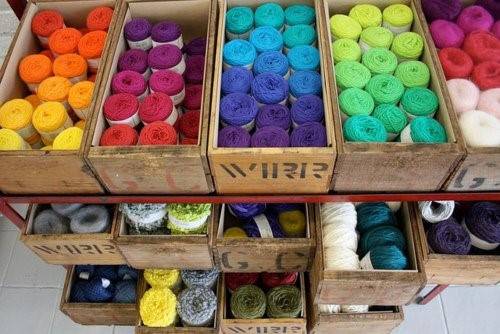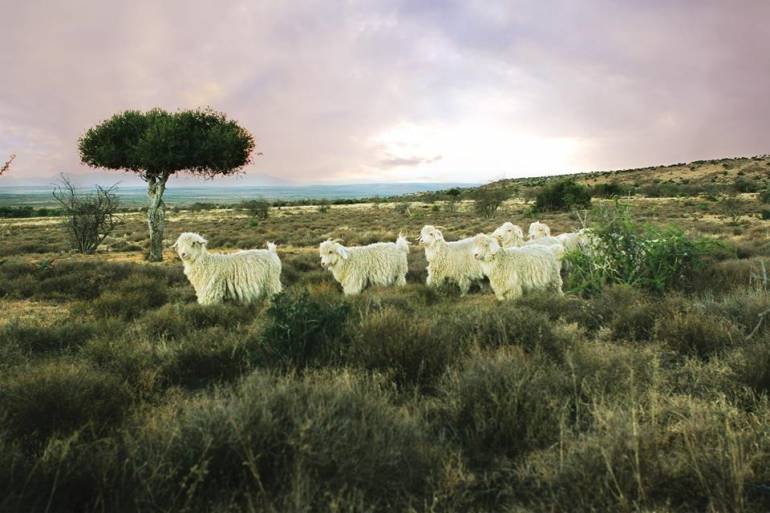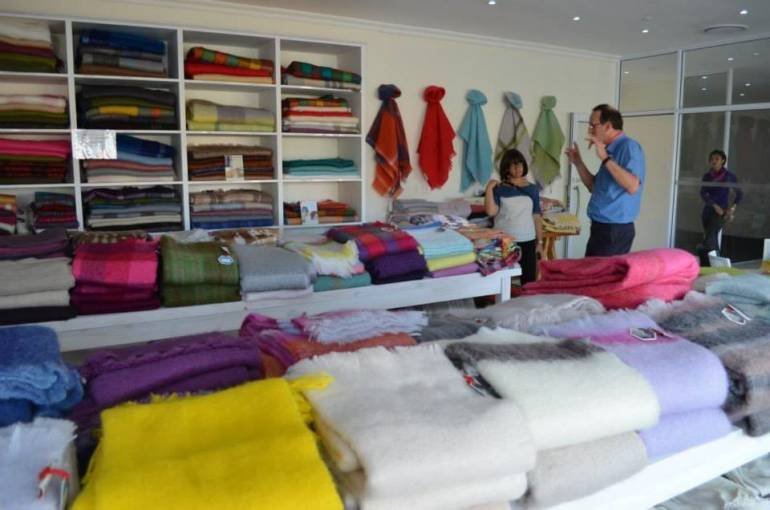A meander through mohair land in Nelson Mandela Bay

Mohair is often dyed in brilliant colours. The strong fibres retain colour longer than most other fibres. Photo courtesy of Mohair South Africa
Port Elizabeth is considered by many to be the mohair capital of the world. More than 20 000 people are employed in the industry, 50% of the world's mohair is produced in the Eastern Cape (most of which flows through PE on its way to world markets) and there are a number of mohair farms and factories in the area that are open to visitors.
In addition, about 70% of the mohair produced in Argentina, Turkey, Lesotho and Texas comes into South Africa via PE to be processed in local factories and is then exported.
Angora goats grow mohair in much the same way that sheep grow wool. However, where sheep are shorn once a year, goats are shorn twice. This is because the mohair grows quite long and shearing is a way to stop the goats from walking all over the silky fibre.
Seeing the docile animals and how the wooly fibre is turned into one of the most luxurious and valuable yarns has become a tourist attraction in the area and is so popular that the Mohair Meander was started in 2009.
The Mohair Meander starts on the R75 in Graaff-Reinet, which is the centre of angora goat farming. From there it crosses the Sundays River into Jansenville, finally ending in Uitenhage, part of the greater PE metrolpole.
Anle Marais, marketing manager for Mohair South Africa, says mohair tourismis becoming increasingly popular and a number of working farms are inviting tourists to come and visit so that they can show them how they operate.
The Hinterveld Farm in Uitenhage offers tours of its facilities and a has a great shop on site that stocks gorgeous mohair goodies.
Getting your goat
Angora goats were introduced to South Africa in 1838 when the Sultan of Turkey sent 12 rams and one ewe to Port Elizabeth. The goats were meant for breeding, but the wily sultan had had the rams neutered. Unbekown to him, however, the ewe was pregnant and gave birth to a kid ram soon after her arrival in South Africa.
That was the beginning of the mohair industry, which has since grown into the largest in the world. Some of the mohair is used locally in textiles and fibres, but a large portion is exported to other countries.
So if you're somewhere in Europe or North America and come across a mohair garment, there's a good chance that it passed through PE at one time or another.
Angora goats graze on long grass and weeds. Photo courtesy of Mohair South Africa 
12 facts about angora goats and mohair
- Angora goats are shorn twice a year
- Shearing takes place in May and November
- Each goat produces between five and eight kilograms of mohair every year
- Different grades of mohair are used for different products, including socks, suits, blankets and soft home furnishings
- Mohair keeps you warm in summer and cool in winter
- The fibre is flame and crease resistant
- The industry employs about 20 000 people in the Eastern Cape
- Angora goats originated in Asia Minor
- Angora goats produce white, brown, tan and even red mohair
- Like all goats, they are highly intelligent
- Mohair is one of the world’s most durable materials
- The fibre takes brilliantly to dyeing and the colours take a much longer time to fade than on other fabrics
Below are some tweets from the recent #MeetSouthAfrica mohair tour.
Touring Hinterveld factory; learning about mohair, wool, weaving and such. #MeetSouthAfrica pic.twitter.com/GZUn6ikDSK
— Rob (@Bloggeries) May 5, 2014
Final product ... luxuriously gorgeous! #mohair #MeetSouthAfrica pic.twitter.com/HIxzwA7Ho9
— Ciki (@agentcikay) May 5, 2014
Did you know that South Africa produces 70% of all the Mohair in the world? #MeetSouthAfrica pic.twitter.com/ptYyUL3gE8
— Katarina Mancama (@KatarinaMancama) May 5, 2014
Categories
Featured Posts
-
Unleash the Summer: Essential Travel Hacks for Saving, Safety and Smart Packing
As the temperature rises and the days grow longer, the allure of summer travel becomes…
-

Gqeberha: Tales of Adventure and Exploration
Although this adventure quote might sound cliche and a bit overused, it’s one thing that…
-

101 Things to do in and around Nelson Mandela Bay (Port Elizabeth/Gqeberha)
With an abundance of things to see and do in and around Gqeberha (Port Elizabeth), it is…
